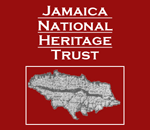THEY are among the most majestic mountains in the Caribbean region — some say, the world — yet very few ordinary Jamaicans have made the trek to the Blue Mountain Peak.
For those who have had the privilege, and stamina, to make the seven-mile hike up from Whitfield Hall, it is one of the most amazing and inspiring experiences in their lives, and a memory to be treasured for all time. Up here, the air is cold and pure, the views staggeringly beautiful, and you enter a magical world of swirling mists, glistening ferns and elfin forests. With its designation as a UNESCO World Heritage Site, the Blue and John Crow Mountains National Park, which will celebrate its 25th anniversary on February 25 next year, is perfectly positioned to become the next big attraction in JA, especially among the young, the jet set and the yoga lovers.
Wealthy Europeans, especially, adore the tranquility up here, and with the opening up of a culinary trail — EITS (Europe in the Summer), Café Blue, The Gap, Strawberry Hill, and the coffee farms location will be a magnet for organic foodies and seekers of sublime sensations far away from the madding crowd. The hundred thousand acres of the Blue and John Crow Mountains National Park was designated a UNESCO World Heritage Site in 2015, taking its place alongside the Egyptian pyramids, Timbuktu, Viñales Valley in Cuba, and the Great Wall of China as being recognised globally for its invaluable natural and cultural resources, including 1,300 species of flowering plants, 200 bird species, and the legacy of the legendary Maroons.
On July 3, 2015, the Blue and John Crow Mountains were named as the first “mixed” World Heritage Site in the Caribbean, one of only 32 on the planet. The montane forest of the Blue Mountains (over 1,000m) and John Crow Mountains (over 600m) include a unique Mor Ridge Forest. Above 2,000m, it is known as elfin forest — the trees, stunted and gnarled, are heavily coated with epiphytes (mosses, ferns and orchids). One of the 78 most irreplaceable protected areas for the conservation of the world's amphibian, bird and mammal species, the mountains contain a high proportion of endemic plant and animal species, including globally endangered ones.
Between 30 and 40 per cent of these species are found here only. More than 1,300 species of flowering plant call the mountains home — with 294 being endemics and 87 found only within the site. Sixty-one species of liverwort and moss grow here, as well as 11 species of lichen, all of which are endemic. It is a birders' paradise, and the bird-watching market globally is in the millions, especially in the US.
These mountains are inextricably linked to events that led to the liberation of the Maroons, whose living traditions, ideas and beliefs have ensured their survival. In 2008 UNESCO recognised the Maroons with an inscription on the Representative List of the Intangible Cultural Heritage of Humanity. In addition to its astonishing biodiversity, the 26,000-hectare site is also recognised for the cultural legacy of the Windward Maroons, who adapted so successfully to this rugged terrain that they were able to defeat first the Spanish, then the British colonialists to claim sovereignty and freedom from slavery. What is most remarkable is that the leader of the Maroons was a woman, Queen Nanny, who was both a spiritual healer and a clever military strategist. One of Jamaica's beloved National Heroes, Nanny is featured on the Jamaican $500 bill. The spirit of resistance and resilience the Maroons bequeathed to Jamaica lives on in the cultural retention of songs, dances and drumming that bring healing and guidance to their remaining descendants.
But its UNESCO World Heritage Site designation does not guarantee the Park's protection. The Jamaica Conservation and Development Trust (JCDT), manager of the Blue and John Crow Mountains National Park, has been struggling to find funds to do the necessary work to keep this national treasure in peak condition (no pun intended). Next year, the Park will celebrate its 25th anniversary on February 25. The JCDT launched the celebrations on International Mountain Day, December 11, at Altamont Court Hotel.
The first of JCDT's anniversary activities is the Peak Hike Challenge on January 27. Groups are invited to call or email the JCDT if they would like to arrange their own hikes to the Peak. The main event, 'Symphony in the Mountains', on Sunday, February 25 will be headlined by the Immaculate Conception High School Symphony Orchestra, the Kingston College Chapel Choir, and master drummers from the Charles Town Maroons. It will include the Abeng Tour, a screening of the Nanny, Queen of the Maroons documentary, and the world premiere of the 4th movement of the Maroon Symphony — Onslaught. This movement tells the story of the Great Maroon War (1728-1739), which ended with the signing of a peace treaty with the British.
The JCDT still needs funds for critical resources, since the Government provides only 30 per cent of its budget. Income generated from recreation and tourism is very important, and the main source for the NGO is the legislated user fees for Holywell and the Peak Trail. With help from the Tourism Enhancement Fund (TEF), JCDT has started improvements at Holywell and Portland Gap rest stop. The TEF and Sandals Foundation are assisting with improvements to the shelter at the Peak, However, exhibits for the new visitors' centre at Holywell still require sponsorship.
A recently completed 'Knowledge, Attitudes and Practices Survey' of people in communities around the park will help to guide the JCDT's education and outreach programmes. Collation and data analysis have just begun but preliminary analysis supports a need for funding of:-
- local school visits and presentations;
- local schools visiting Holywell for educational tours;
- continued community outreach by rangers on patrol; and
- continued facilitation of sustainable livelihoods in local communities.
The JCDT will conduct an assessment of the Coney or Jamaican Hutia in Moore Town, Portland, prepare a conservation management plan; and improve boundary markings to clarify exactly where the Park boundary is, especially where there are neighbouring farms.
It is hoped that corporate Jamaica will join the Friends of the Blue and John Crow Mountains. Already, PROVEN has taken up the challenge and donated $100,000 to become an emerald sponsor in the Friends programme, and $75,000 towards the 25th anniversary clelebrations.







